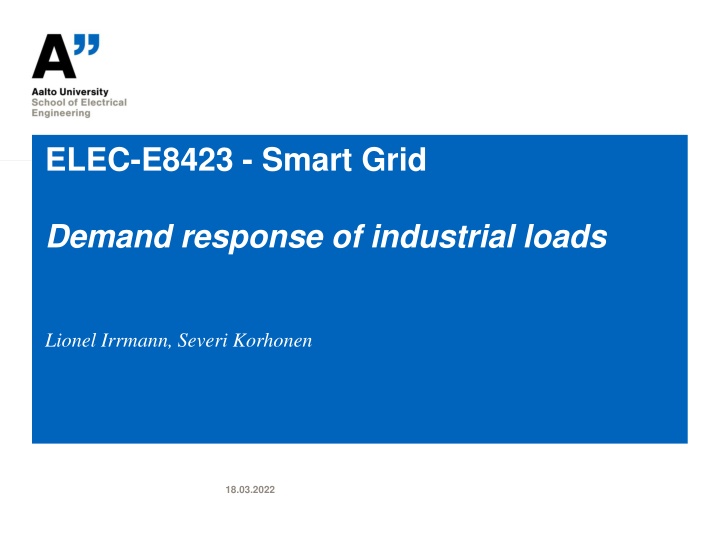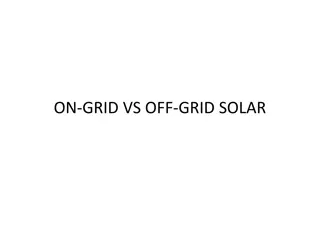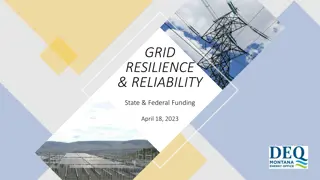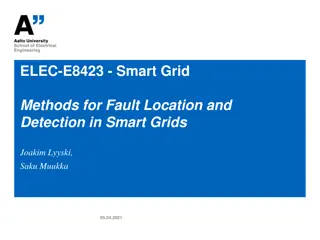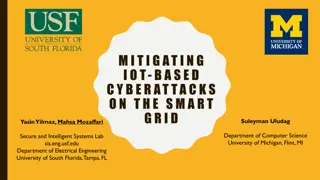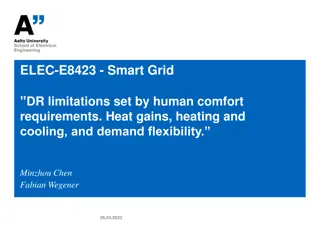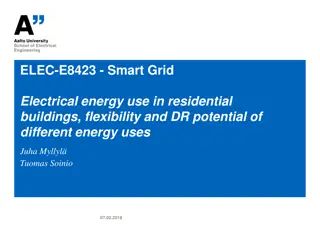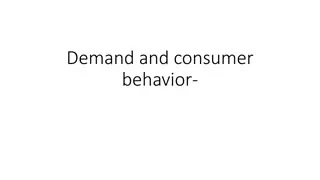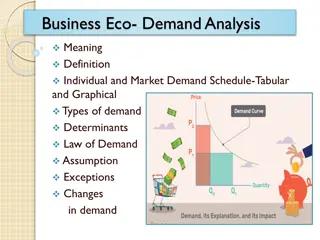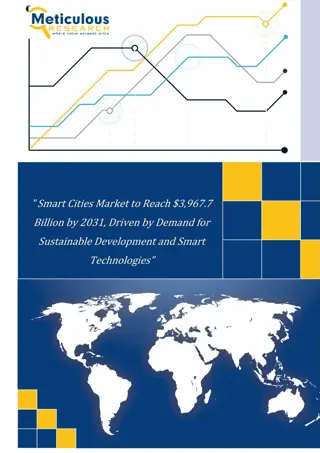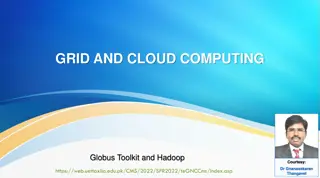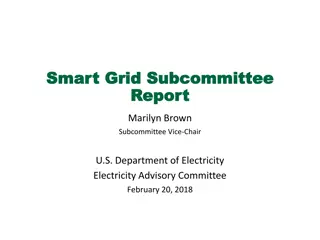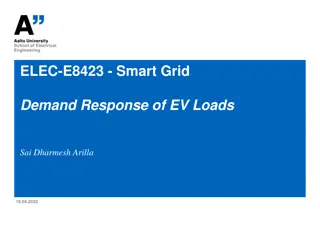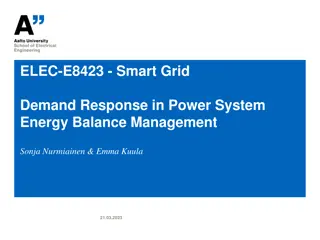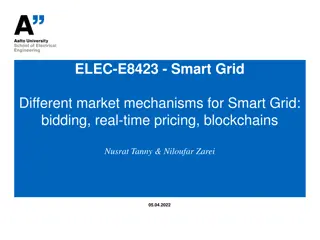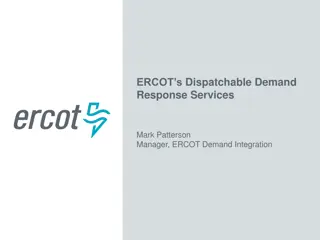Smart Grid Demand Response in Industrial Sector
Adjustment of electricity consumption in the industrial sector for cost savings and power balance management. Learn about the benefits, potential, and participation of industries like forestry, steel, and chemical in demand response programs.
Download Presentation

Please find below an Image/Link to download the presentation.
The content on the website is provided AS IS for your information and personal use only. It may not be sold, licensed, or shared on other websites without obtaining consent from the author.If you encounter any issues during the download, it is possible that the publisher has removed the file from their server.
You are allowed to download the files provided on this website for personal or commercial use, subject to the condition that they are used lawfully. All files are the property of their respective owners.
The content on the website is provided AS IS for your information and personal use only. It may not be sold, licensed, or shared on other websites without obtaining consent from the author.
E N D
Presentation Transcript
ELEC-E8423 - Smart Grid Demand response of industrial loads Lionel Irrmann, Severi Korhonen 18.03.2022
Introduction Demand Response (DR) is the adjustment of electricity consumption for either lowering energy costs, or for power balance management. The Industrial sector is a major electricity consumer Major consumption = major DR potential Motivation: competitiveness of energy intensive industry competitiveness is tied to electricity prices Benefit of demand response 2-sided: Improved competitiveness of industrial products with cheaper energy and additional revenue from market participation Reduced peak demand due to DR = less investments needed in power system 07.02.2018 Page 2
Demand response 101 Users agree to reduce their electricity demand when the grid is under stress Industry sector has participated in DR for a long time by reducing the use of electricity if the price of electricity rises high Source: Fingrid 07.02.2018 Page 3
Industry and energy consumption in Finland Industry amounted to 44% of total Finnish electricity consumption in 2021. Main sectors in Finland: Forestry Metal Chemical Source: Finnish Energy ry 07.02.2018 Page 4
Forest industry Forest industry consists of timber, paper and pulp sectors Forestry can participate in DR mostly with mechanical pulpwood mills, which can take advantage from temporary storage capacity Paper and pulp industry has a potential of 790 MW for fast activating electricity demand response (VTT's estimate 2005) 07.02.2018 Page 5
Steel industry Steel industry consists of for example steel manufacturing etc. Steel industry's largest potential DR participants are in electrolysis processes and electric arc furnaces Most of steel industry's demand response is quickly activated without any long preparation times Steel industry can offer roughly 300 MW of demand response (VTT's estimate 2005) 07.02.2018 Page 6
Chemical industry Examples of Finnish chemical industry are petrochemicals , fertilizers, plastics, and others Integrated chemical processes are very inflexible and have low DR potential Most potential DR participants are processes using heat pumps, electrolyzers, or electrified processes with stockpiles Future potential: switching from fossile fuels to P2X 07.02.2018 Page 7
Other sectors and future trends New industry sectors are being created, e.g. data centers, battery factories New consumption types and industry characteristics Especially data centers promising for demand response due to on-site storages Trend of digitalisation and electrification of processes opens new possibilities in providing demand response Better real-time monitoring and control of loads More electricity consumption Aggregators may reduce the threshold to participate in DR Smaller facilities may not be sufficiently big to market entry or lack resources to do so Aggregators are companies managing the loads of multiple smaller actors Outsource DR participation to aggregators 07.02.2018 Page 8
Conclusions In Finland, industry consumes 44% of electricity, and has a strong potential in demand response Different industry sectors have unique characteristics and capabilities in providing demand response Some industrial sectors have a long history in DR in Finland, but recent developments and trend indicates the role of DR is growing 07.02.2018 Page 9
Source material used Finnish Energy, 2022. Energy Year 2021 Electricity. Available at: https://energia.fi/en/newsroom/publications/energy_year_2021_-_electricity.html#material-view Motiva, 2021. Suomen teollisuuden s hk istyminen ja sen vaikutus energiatehokkuuteen ja hukkal mp jen hy dynt miseen . Available at: https://www.motiva.fi/ajankohtaista/julkaisut/kaikki_julkaisut/suomen_teollisuuden_sahkoistyminen_ja_sen _vaikutus_energiatehokkuuteen_ja_hukkalampojen_hyodyntamiseen.9236.shtml Fingrid, Demand-side management [website, accessed 21.03.2022]. Available at: https://www.fingrid.fi/en/electricity-market/market-integration/the-future-of-the-electricity-markets/demand- side-management/ Juuso Jokiniemi, 2014. S hk n kysynt josutokohteiden mahdollisuudet Suomen teollisuudessa . Available at: http://urn.fi/URN:NBN:fi:aalto-201410042706 VTT, 2005. S hk n kysynt jouston potentiaalikartoitus teollisuudessa. Espoo: Valtion teknillinen tutkimuslaitos. VTT Prosessit PRO3/P3017/05. Julkaistu 31.8.2005. [website, accessed 21.3.2022] Available at: http://www.vtt.fi/inf/julkaisut/muut/2005/PRO3_P3017_05.pdf 07.02.2018 Page 10
